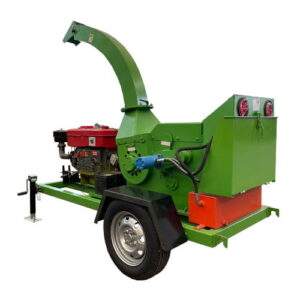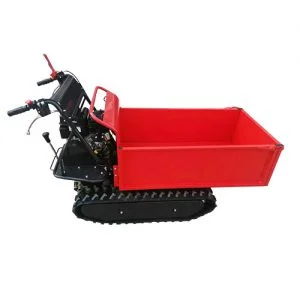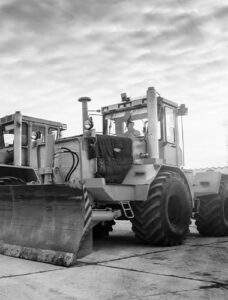Exploring the Benefits of Wood Chipper Machines in Landscaping
Introduction
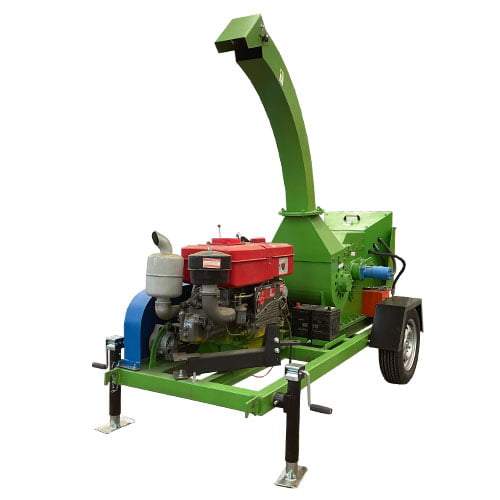
In the realm of landscaping, maintaining a pristine and well-manicured outdoor space requires a combination of diligent effort and the right tools. Among the essential equipment that landscape professionals and enthusiasts alike rely on, wood chipper machines stand out as invaluable assets. These powerful machines efficiently transform bulky wood waste, such as branches, twigs, and logs, into nutrient-rich wood chips, offering a multitude of benefits for both landscaping projects and the environment.
Unveiling the Advantages of Wood Chippers in Landscaping
Wood chipper machines introduce a range of advantages that enhance landscaping practices and promote a healthier, more sustainable environment:
- Efficient Waste Management: Wood chippers eliminate the hassle and time-consuming task of manually hauling and disposing of yard waste. By chipping wood debris into manageable pieces, these machines streamline the waste management process, reducing landfill contributions and conserving valuable resources.
- Reduced Labor Costs: The efficient operation of wood chippers significantly reduces the labor costs associated with traditional waste removal methods. By quickly transforming wood waste into chips, these machines minimize the time and effort required for manual handling and disposal.
- Environmental Friendliness: Wood chippers contribute to a more sustainable approach to landscaping by converting wood waste into valuable resources. The resulting wood chips can be utilized for various purposes, such as mulch, compost, and fuel, minimizing the environmental impact of yard waste disposal.
- Enhanced Soil Health: Wood chips produced by wood chippers serve as a natural soil amendment, improving soil structure, aeration, and water retention. As the chips decompose, they release essential nutrients, enriching the soil and promoting healthier plant growth.
- Aesthetic Appeal: Wood chips offer a visually appealing ground cover, adding a layer of natural beauty and texture to landscaping projects. They help suppress weed growth, retain moisture, and regulate soil temperature, contributing to a well-maintained and aesthetically pleasing landscape.
Applications of Wood Chippers in Landscaping
Wood chipper machines find diverse applications in landscaping, transforming a wide range of wood waste into valuable resources:
- Creating Mulch: Wood chips are a primary component of mulch, a protective layer spread around plants to suppress weeds, conserve soil moisture, and regulate soil temperature. Mulching with wood chips promotes healthier plant growth and enhances the overall appearance of landscaping projects.
- Enhancing Compost: Wood chips can be incorporated into compost piles, providing a source of carbon that balances the nitrogen-rich materials typically added to compost. The resulting compost, enriched with wood chips, serves as a nutrient-rich soil amendment for landscaping applications.
- Generating Biomass Fuel: Wood chips can be utilized as a renewable energy source for biomass boilers or outdoor fireplaces. This sustainable fuel option reduces reliance on fossil fuels and contributes to a more environmentally conscious landscaping approach.
- Pathways and Groundcover: Wood chips can be used to create attractive and functional pathways or groundcover areas in landscaping projects. They provide a natural and aesthetically pleasing surface for foot traffic while suppressing weed growth and preventing soil erosion.
Factors to Consider When Choosing a Wood Chipper
When selecting a wood chipper for landscaping needs, several factors should be taken into account:
- Chipping Capacity: The chipping capacity determines the size and quantity of wood debris the machine can handle. Consider the typical amount of wood waste generated in your landscaping projects to choose a chipper with adequate capacity.
- Power Source: Wood chippers are powered by either gasoline or electric motors. Gasoline-powered chippers offer portability and flexibility, while electric chippers are quieter and more environmentally friendly but require an electrical outlet.
- Chip Size: Different wood chipper models produce chips of varying sizes. Select a chipper that produces chip sizes suitable for your intended applications, such as mulch, compost, or biomass fuel.
- Feed Chute Size: The feed chute size determines the maximum diameter of wood pieces the chipper can accommodate. Choose a chipper with a feed chute large enough to handle the typical size of wood debris in your landscaping projects.
- Additional Features: Some wood chippers offer additional features, such as self-feeding mechanisms, reverse functions, and chip discharge options. Consider these features based on your specific needs and preferences.
Comparison of Tow-Behind, Self-Propelled, and Truck-Mounted Wood Chipper Machines
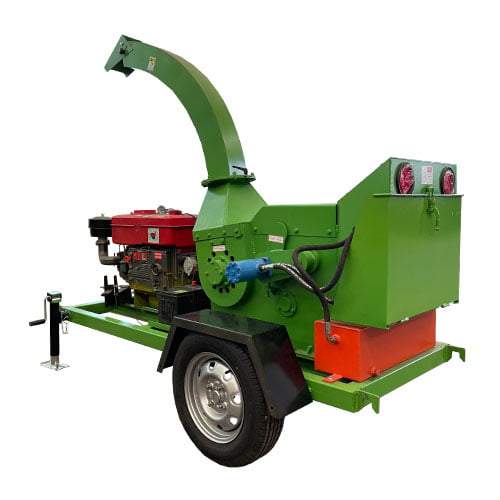
| Feature | Tow-Behind | Self-Propelled | Truck-Mounted |
|---|---|---|---|
| Portability | High | Medium | Low |
| Capacity | Low to Medium | Medium to High | High |
| Maneuverability | Medium | High | Low |
| Fuel Efficiency | High | Medium | Low |
| Suitability for Residential Projects | High | Medium | Low |
| Suitability for Commercial/Municipal Projects | Low | High | High |
Conclusion
Wood chipper machines have become an indispensable tool in the world of landscaping, offering a range of benefits that contribute to efficient waste management, improved aesthetics, and sustainable practices. By understanding the various types of wood chippers and their applications, landscapers can make informed decisions to enhance the overall quality and efficiency of their operations. As the demand for eco-friendly and visually appealing outdoor spaces continues to grow, the role of wood chipper machines in landscaping will only become more crucial.
FAQ
Q: Can wood chipper machines handle large branches and tree limbs?
A: Yes, most wood chipper machines are designed to handle branches and tree limbs of varying sizes, depending on the machine’s capacity and specifications.
Q: How often should I sharpen the blades on my wood chipper machine?
A: It is recommended to sharpen the blades on your wood chipper machine regularly, ideally before each use or as needed depending on the frequency and volume of materials being processed.
Q: Are wood chipper machines safe to use?
A: Wood chipper machines can be safe to use when operated properly and with appropriate safety precautions. It is essential to follow manufacturer guidelines, wear protective gear, and avoid feeding materials that exceed the machine’s capacity.

